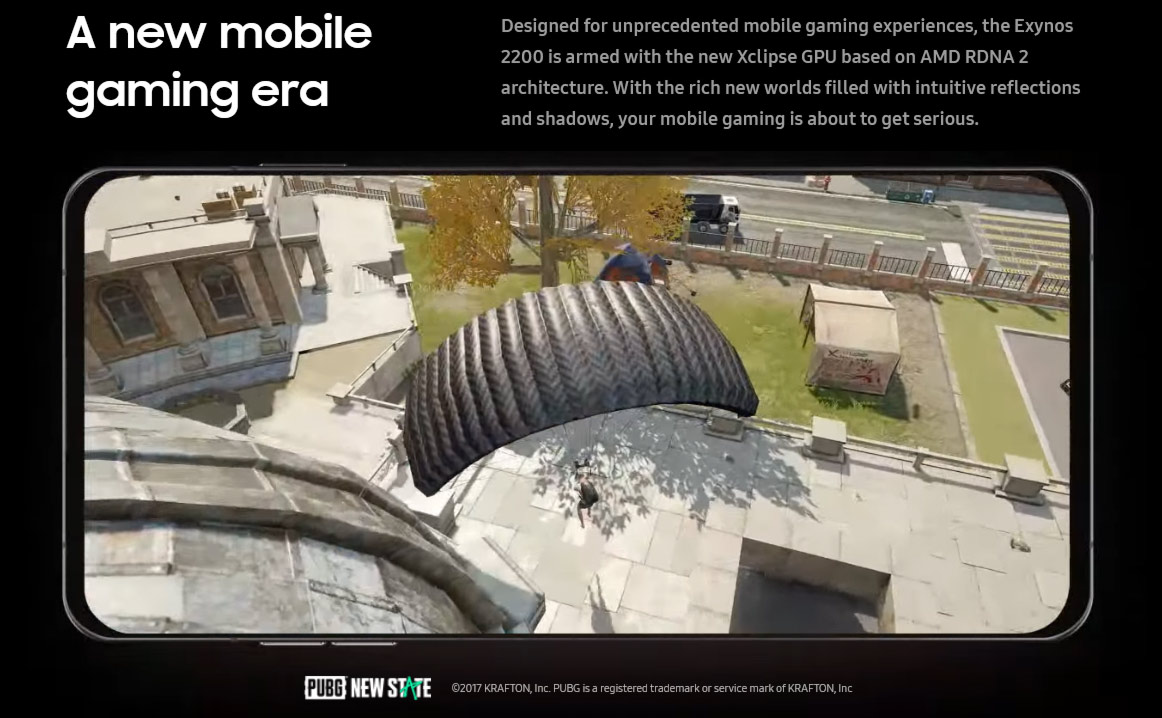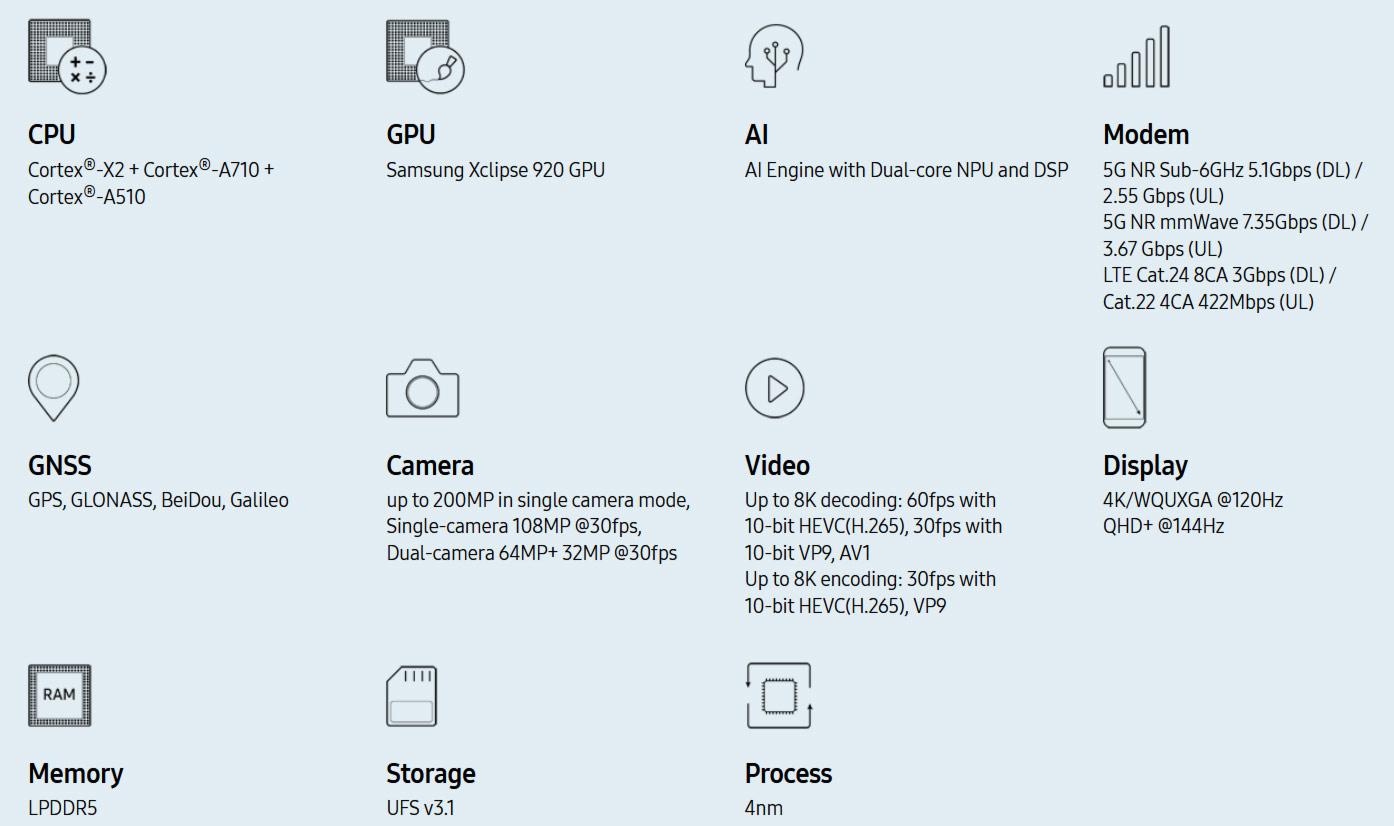Samsung Exynos 2200 Announced With AMD RDNA2 Xclipse GPU
This 4nm SoC also features the newest Arm CPU cores, and an upgraded NPU.
It may be a week late, but Samsung has now officially announced the outline specs for its premium Exynos 2200 mobile processor. Samsung's news SoC features the AMD RDNA 2-based Samsung Xclipse GPU which Samsung claims offers "Console quality graphics". But while the chip is in mass production we don't as yet have any details of the device it will make its debut within.
With the launch of the Exynos 2200, Samsung makes a plethora of confident claims. The Korean tech giant's own designed SoCs have sometimes trailed in popularity, with consumers preferring Qualcomm if given a choice, and it clearly hopes to break this trend with the advanced new processor. To try and get a feel for whether Samsung really has broken through with this SoC design, let us look at each major constituent part in turn.
Samsung Xclipse GPU
Starting with the headlining GPU, when this SoC becomes available to third party testers we are sure we shall see some fascinating results. We don't have a tech specs deep dive on the GPU today, as all we have is a rough outline of its purported capabilities.
According to Samsung, its new AMD RDNA 2 architecture GPU positions the graphics capabilities of a mobile phone closer to a console than ever. The Xclipse inherits important technologies from its RDNA 2 brethren on PC, such as hardware accelerated ray tracing (RT) and variable rate shading (VRS).
Marking an "exciting new chapter" in mobile graphics, Samsung asserts the Xclipse GPU will "offer the most immersive graphics and user experiences even on mobile." The new GPU is also claimed to be "power efficient," which may allay some of the pre-launch fears that this SoC had been delayed due to getting far too toasty when the GPU is taxed.
In the background, Samsung's multi-IP governor (AMIGO) will enhance overall performance and efficiency by smartly using GPU acceleration depending on the task at hand.
Octa-core CPU
Samsung says that the Exynos 2200 is one of the first SoCs to make use of Arm's latest Armv9 CPU cores. MediaTek, with its Dimensity 9000, seems to have beaten it for claiming the actual first consumer Armv9 SoC to launch. The Samsung Exynos uses a tri-cluster CPU design with one powerful Arm Cortex-X2 flagship-core, three performance and efficiency balanced Cortex-A710 big-cores and four power-efficient Cortex-A510 little-cores. We don't have deeper specs, such as clock speeds etc, at this time.
Get Tom's Hardware's best news and in-depth reviews, straight to your inbox.
Other important Exynos 2200 SoC constituents
Elsewhere in the SoC design, Samsung has included an upgraded dual-core NPU, claimed to offer double the performance of its predecessor in AI performance. Moreover the NPU has much higher precision with FP16 support, in addition to power efficient INT8 and INT16 calculations, says Samsung.
A new ISP enhances imaging tasks and supports the latest image sensors for up to 200MP photography, up to 30fps in 108MP single camera mode, and up to 64+36MP in dual camera mode. It is capable of driving up to seven image sensors, and up to four at a time. Working alongside the NPU the on-device AI can recognize multiple objects, faces, and scenes.
Last but not least the Exynos 2200 SoC includes an onboard modem supporting both the sub-6GHz and mmWave frequencies, as well as 4G LTE. GPS, GLONASS, BeiDou, Galileo satnav systems are supported too. Devices packing the Exynos 2200 will use LPDDR5 memory and UFS 3.1 storage.
Why the delay?
Above we touched upon some recent rumors relating to the delayed launch of the Samsung Exynos 2200. About a week ago, prominent smartphone leaker Ice Universe alleged that this upcoming flagship SoC was being held back as engineers frantically tweaked it. The purported issues were largely due to the GPU generating too much heat at its target frequencies. This official SoC announcement allays fears somewhat, with its confident language, but a Samsung Statement to Business Korea said that this SoC has been delayed to fall in line with a new premium Samsung device.

Mark Tyson is a news editor at Tom's Hardware. He enjoys covering the full breadth of PC tech; from business and semiconductor design to products approaching the edge of reason.

